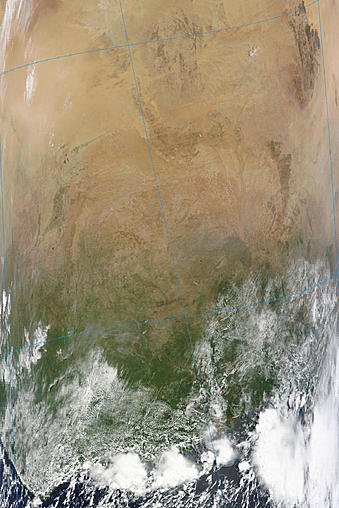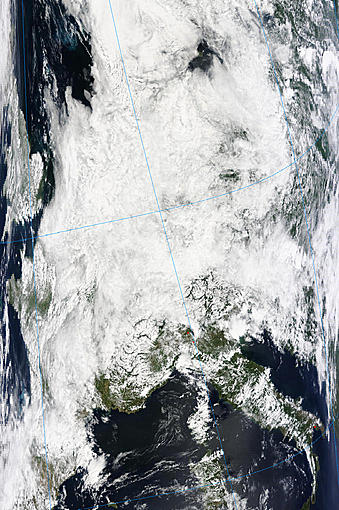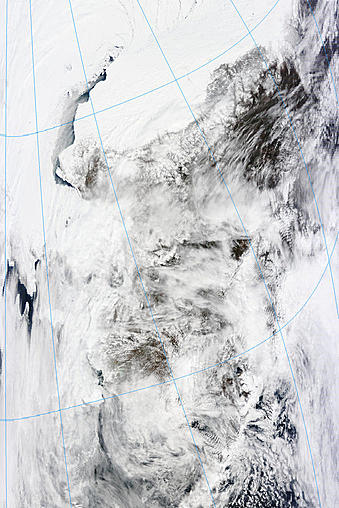This article is written in response to Dr. Roy Spencer's claims about cloud albedo effects in an article by Cameron J English: Interview With A Global Warming Skeptic: Dr. Roy Spencer.
One of the most common arguments used by deniers of AGW is that computer models are unreliable.
“Climate models are only as good as the assumptions that go into them. And they have hundreds of assumption. All it takes is one assumption to be wrong for the forecast to be way off.”
Roy Spencer.
http://www.newsofinterest.tv/video_pages_flash/gw/ggws/computer_model_pr...
In my new book, The Great Global Warming Blunder: How Mother Nature Fooled the World’s Top Climate Scientists, I show the results of experiments with a simple climate model that runs in an Excel spreadsheet.
Roy Spencer.
http://www.drroyspencer.com/2010/04/simple-climate-model-release-version...
This is a relationship [climate researchers] see during natural climate variations:
warmer years tend to have less cloud cover. If that anomalous warming is indeed causing a decrease in cloudiness, then more sunlight would be let in, magnifying the relatively small amount of direct warming that increasing carbon dioxide produces. This is called positive cloud feedback.
...
But what they have neglected to consider is the fact that a large part of that observed warmth was caused BY the decrease in clouds, not the other way around.
Roy Spencer's theory about clouds and global warming has, in my opinion, only one merit.
It is falsifiable.
If decreased cloud cover causes increased warming then the places with least cloud cover should show the most warming.
If increased cloud cover causes increased warming then the places with most cloud cover should show the most warming.
If zones can be found with clear indications of global warming both with and without increased cloud cover, then the theory, by failing to distinguish one case from its negative, is falsified.
Query: Where can you find the least cloud cover together with higher than average warming?
Deserts.
Query: Where can you find the most cloud cover together with higher than average warming?
Forests, ice sheets and glaciers; the Arctic and Antarctic.

West Africa
MODIS/Terra 2010/133 05/13/10 10:35 UTC

U.K. and Western Europe
MODIS/Terra 2010/133 05/13/10 10:25 UTC
This cloud cover is coming from the North as the Arctic ice melts.

Alaska and Bering Strait area.
MODIS/Terra 2010/131 05/11/10 22:05 UTC
Cloud cover from melting ice.
Deserts are getting warmer
Global climate change, the directional change induced by anthropogenic emissions of greenhouse gases (to be distinguished from longterm or short-term climate variations not caused by global-scale human impact on the climate system) also affects deserts. Deserts warmed-up between 1976 to 2000 at an average rate of 0.2-0.8ºC/ decade - an overall increase of 0.5-2ºC (Table 3.1), much higher than the average global temperature increase of 0.45ºC, which has been attributed to the increase in atmospheric concentrations of greenhouse gases (IPCC 2001). Global warming is expected to induce an overall increase in rainfall; but high latitudes are projected to warm more than the mid- and low-latitudes, resulting in more rainfall in higher latitudes linked to reduced rainfall in subtropical ones. Indeed, in most deserts within the subtropical belt, rainfall has already been decreasing in the last two decades
http://www.unep.org/geo/gdoutlook/045.asp
The UNEP investigation found that climate change over the past 25 years has caused temperatures to rise faster than the global average in nine out of 12 major deserts studied. The study found that the projected temperature increases over the next 75 to 100 years range from 1C to 7C.
Although a few deserts may experience more frequent pulses of heavy rainfall as a result of higher temperatures, many more are likely to become far more arid than they are today. Deserts fed by glacial meltwater - such as the Atacama and Monte Deserts in South America - will suffer most when their glaciers melt beyond a point that will cause rivers to run dry.
http://www.independent.co.uk/environment/desert-life-threatened-by-clima...
The cryosphere is getting warmer
Predictions of the rate and extent of Arctic and Antarctic warming from as recently as 2008 have been shown to be too low. Both the Arctic and the Antarctic are warming faster than the global average. The Greenland ice sheet is warming faster than the global average. Most glaciers are losing mass, indicative of a warming greater than the global average.Seasonal ice melt produces huge amounts of fog and cloud. According to naive views of cloud albedo effects the ice should stop melting once obscured by clouds of water vapor. It doesn't.
See, e.g. http://www.epa.gov/climatechange/effects/polarregions.html
Concluding remarks:
Rising CO2 levels cause rising temperatures. Rising temperatures cause rising atmospheric H2O levels but only where the H2O can be held in the atmosphere.
Cloud cover is a product of regional temperature and regional water availability subject to the effects of physical geography.
Dry regions subjected to warming have drier atmospheres. This gives a negative feedback for H2O as a greenhouse gas in those regions. Less moisture means fewer plants. Fewer plants means less CO2 uptake. Desertification is a locally positive CO2 feedback since it leads to locally reduced CO2 sequestration.
A final note.
Roy Spencer's Excel spreadsheet model assumes an ocean depth of 50 meters.
“Climate models are only as good as the assumptions that go into them. And they have hundreds of assumption. All it takes is one assumption to be wrong for the forecast to be way off.”
Roy Spencer.
http://www.newsofinterest.tv/video_pages_flash/gw/ggws/computer_model_pr...



Comments